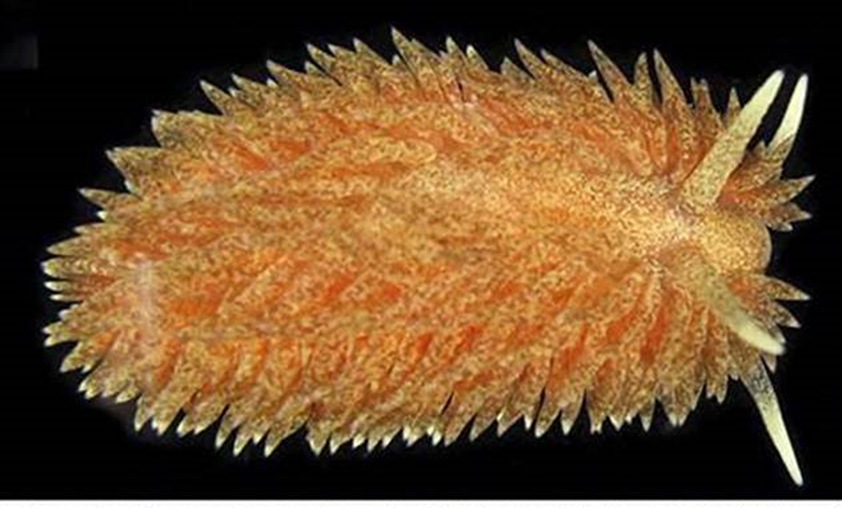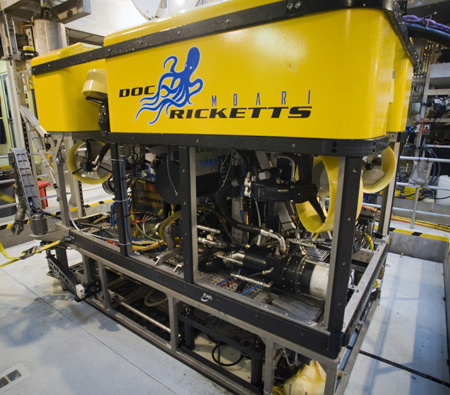 |
Aeolidea libitinaria
 |
Aeolidea libitinaria Valdes, Lundsten & Wilson 2018. Once again this week Angel's team offers up another new species discovered during whale fall studies (a time-series analysis of whale fall ecology) carried out by researchers at the Monterey Bay Aquarium Research Institute (MBARI) and Scripps Institution of Oceanography (SIO). Another typical aeolid species, it is obviously an Aeolidia. The rhinophores are long with low irregular swellings. The body color is brown-ochre with yellow spots. The rhinophores, oral tentacles and cerata are tipped with white. The specimen measured 23mm. Aeolidia libitinaria is a sister species of Aeolidea loui . You may recall that California specimens used to be called Aeolidia papillosa, which is now determined to be a northern species. Aeolidia libitinaria and A. loui may be genetically similar, but their coloration and internal anatomy show them to be distinct. The specimen was discovered on a grey whale skeleton (implanted 5 October 2004) in Monterey Bay, California in 382 m depth. |
 |
Like our new species featured the past two weeks this species was photographed and collected by the ROV Doc Ricketts, seen at left. The species is named for the Latin word for "Undertaker" because of its presence on whale bones of a deceased cetacean. Reference: Valdes,A. & Lundsten, L. & Wilson, N. (2018). Five new deep-sea species of nudibranchs (Gastropoda: Heterobranchia: Cladobranchia) from the Northeast Pacific. Zootaxa. 4526. 401. 10.11646/zootaxa.4526.4.1.
Sammamish, WA 98074 Oct. 2019 Send Dave email at davidwbehrens@gmail.com
|

Attention all you Sluggers, and you know who you are! The NSSI 2nd edition is now available in ebook PDF and book form . The hard back version will become available Nov. 1st. Both will cost $65 (individually). You will need to jump through a few hoops to get the electronic version as pdf distribution is protected by Adobe ID!! Please read the following to enable reading your electronic purchase! This new 2nd Edition is updated and reorganized, including 185 new species. Among other features, the new edition includes additional photographs of species, an identification key, and an up-to-date classification reflecting the latest evolutionary relationships. The Indo-Pacific represents the largest expanse of tropical ocean in the world, stretching from the Indian Ocean coast of southern Africa and the Red Sea to the central Pacific of the Hawaiian Islands, Easter Island and the Marquesas. This region supports the most diverse marine fauna of any place in the world for most groups of marine organisms. The nudibranchs and sea slugs are no exception to this rule; there are about 3,000 described species of these organisms in the world and at least 40% of these have been found exclusively in the Indo-Pacific tropics. This book illustrates 2,138 Indo-Pacific nudibranchs and sea slugs, including many undescribed species.
|

|
